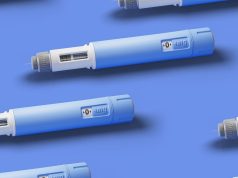But glucagon stimulation test should be used instead for patients in hyperglycemic state
WEDNESDAY, May 24, 2017 (HealthDay News) — A normal meal tolerance test (NMTT) — a simplified version of the mixed meal tolerance test — is valuable as an insulin secretion test in patients with type 2 diabetes, with exception of those in a hyperglycemic state, according to a study published online May 11 in the Journal of Diabetes Investigation.
Youhei Fujioka, M.D., Ph.D., from Tottori University in Yonago, Japan, and colleagues performed a NMTT using calorie-controlled meals adjusted for ideal body weight, measuring C-peptide immunoreactivity (CPR) twice: at fasting and two hours after the meal. The team examined the properties of the glucagon stimulation test (GST) and the NMTT in 142 patients with type 2 diabetes. The change in CPR (ΔCPR) was calculated by subtracting fasting CPR from the CPR measured six minutes after the glucagon injection (GST) or 120 minutes after the meal (NMTT).
The researchers found that the mean ΔCPR was 2.0 and 3.1 ng/mL for the GST and NMTT, respectively. The ΔCPR was greater in the NMTT than the GST for 104 patients, and the mean ΔCPR was significantly greater in NMTT versus GST (P < 0.05). The mean ΔCPR was significantly greater in the NMTT versus the GST among 42 subjects not taking antidiabetic agents (4.3 versus 2.4 ng/mL; P < 0.05). For prediction of GST ΔCPR to be larger than NMTT ΔCPR, the optimal cut-off levels were fasting plasma glucose of 147 mg/dL (sensitivity, 0.64; specificity, 0.76; and area under the receiver operating characteristic curve [AUC], 0.73) and hemoglobin A1c of 9.0 percent (sensitivity, 0.56; specificity, 0.71; and AUC, 0.66).
“This NMTT is simple, making it more practical for use in a clinical setting than the full mixed meal tolerance test or the GST,” the authors write. “We propose that the NMTT is useful in evaluating endogenous insulin secretion ability even for patients taking antidiabetic medications.”
Copyright © 2017 HealthDay. All rights reserved.








